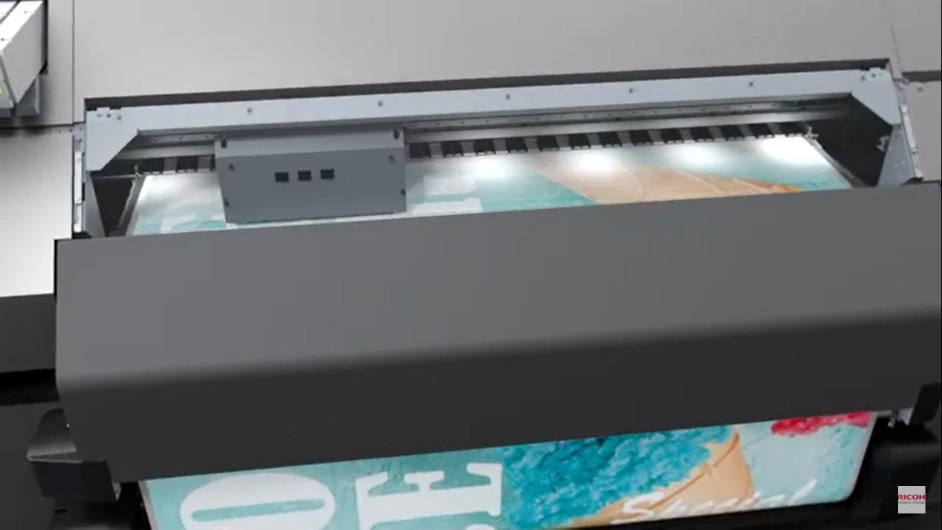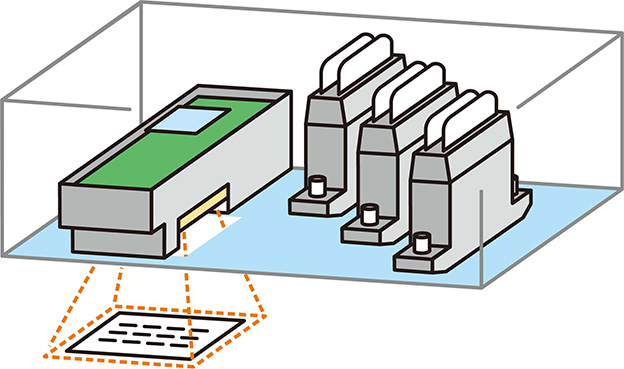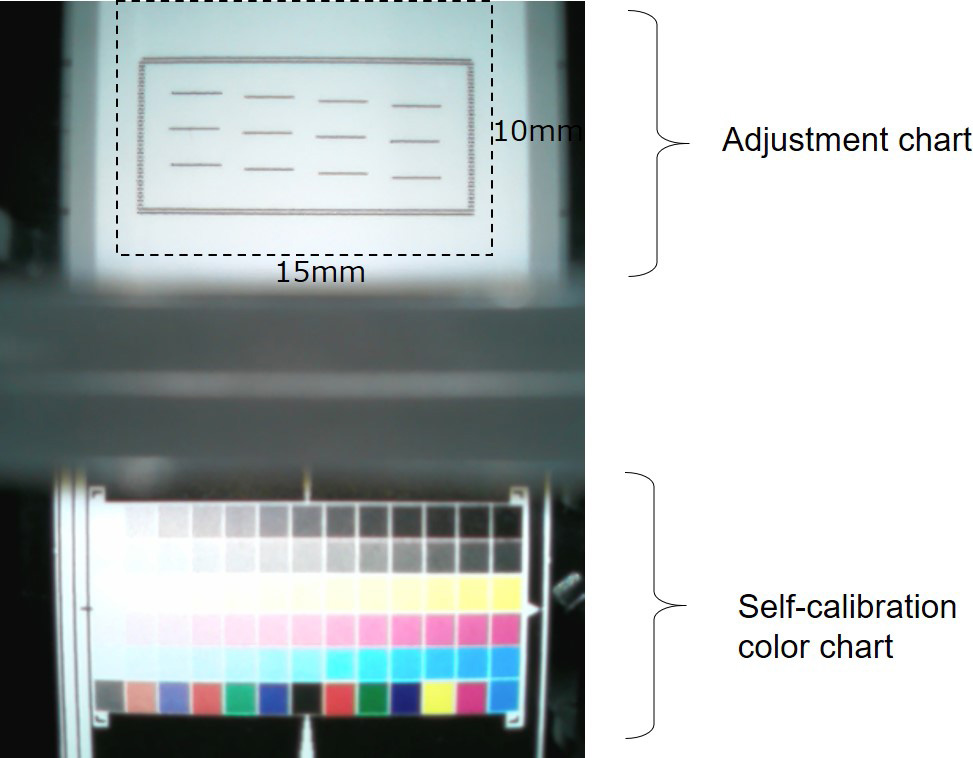- Home
- Ricoh's Technology
- Automatic Adjustment Using Image Sensors
Automatic Adjustment Using Image Sensors
Background
Printing companies must meet expanding needs to deliver numerous items in small lots.
Producing accurate images requires precision adjustment. To print optimal images on various media types, the ink droplets landing position and how much the media is fed must be finely controlled.
Ricoh has developed image sensors for automatic adjustment to reduce the adjustment workload of dealing with many different types of media.
Solutions
In conventional models, a reflective photosensor is installed on the carriage. (The carriage is the mounting base for the parts required for printing, including the inkjet printheads and sensors.) Detection errors were inevitable because the sensor had to detect the adjustment charts while the carriage was moving. Ricoh has developed a new image sensor that eliminates the detection errors resulting from variations in carriage operation.
Technical Highlights
On the Ricoh Pro L5130e/L5160e wide-format production printers, the carriage travels in reciprocating motion on a rail. An adjustment chart is used to configure the printer before printing commences.

The two-dimensional image sensor at the center of this technology captures the adjustment chart while the carriage is stopped. This results in enhanced adjustment accuracy because the adjustment process is not affected by the variation in carriage operation.
The image sensor self-calibrates utilizing an internal color chart, enhancing the efficiency of detecting the adjustment chart.


Adjustment Steps
- The inkjet printhead installed on the carriage draws an adjustment chart. The sheet is forwarded to the reading position, and the image sensor captures the adjustment chart.
- The image sensor unit calculates how the ink droplet landing positions are shifted according to the captured adjustment chart. The results are sent to the printer control unit.
- Based on the calculated results, the printer control unit calibrates the printing operation.
In addition, the system features an internal color chart for self-calibration. This configuration allows colorimetric functions to be installed in the future.
Ricoh’s Vision
The market is experiencing a boost in demand for the automation of internal color management.
Automation requires a color sensor that measures color dynamically and quickly.
Ricoh will further develop this original image sensor containing colorimetric functions, thus enabling color management automation.
Sorted by : field “Inkjet” | product type “Inkjet” “Inkjet printheads”